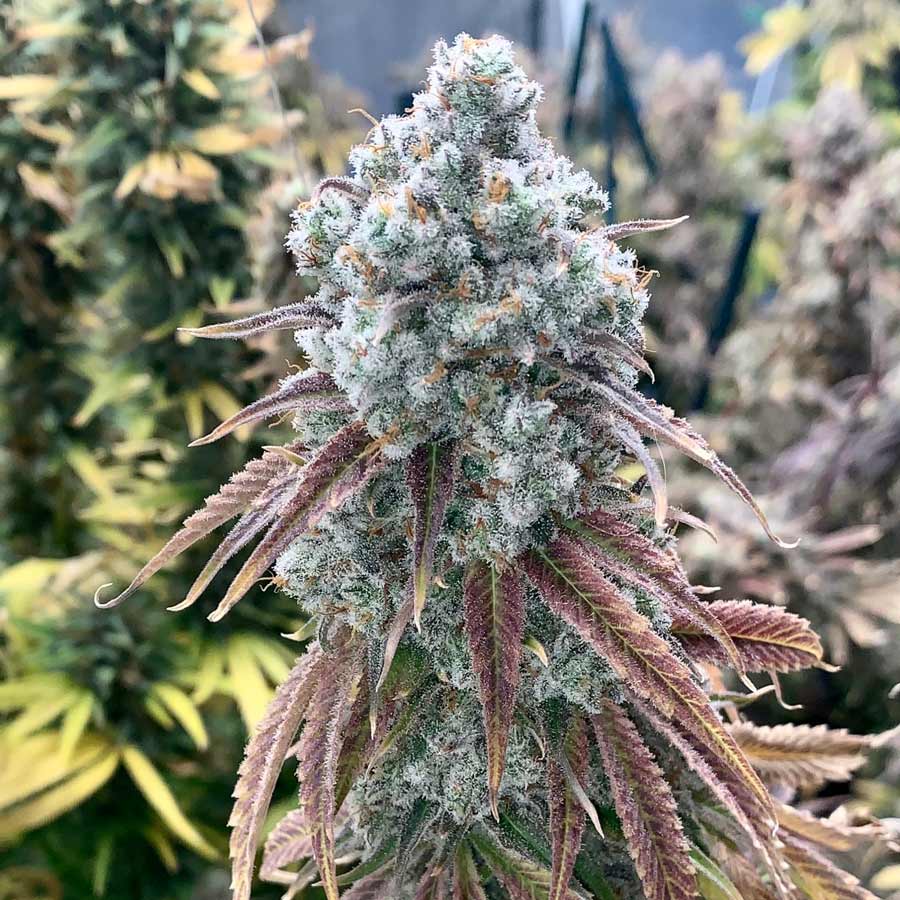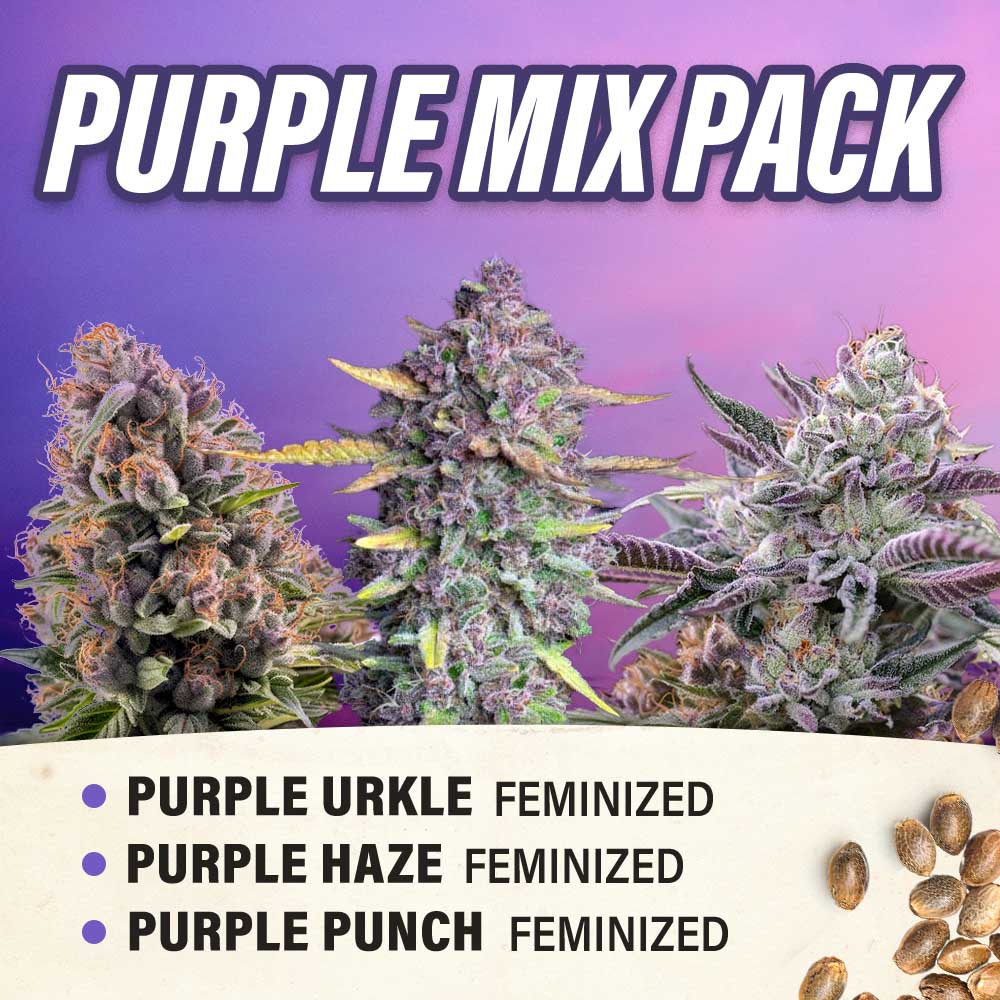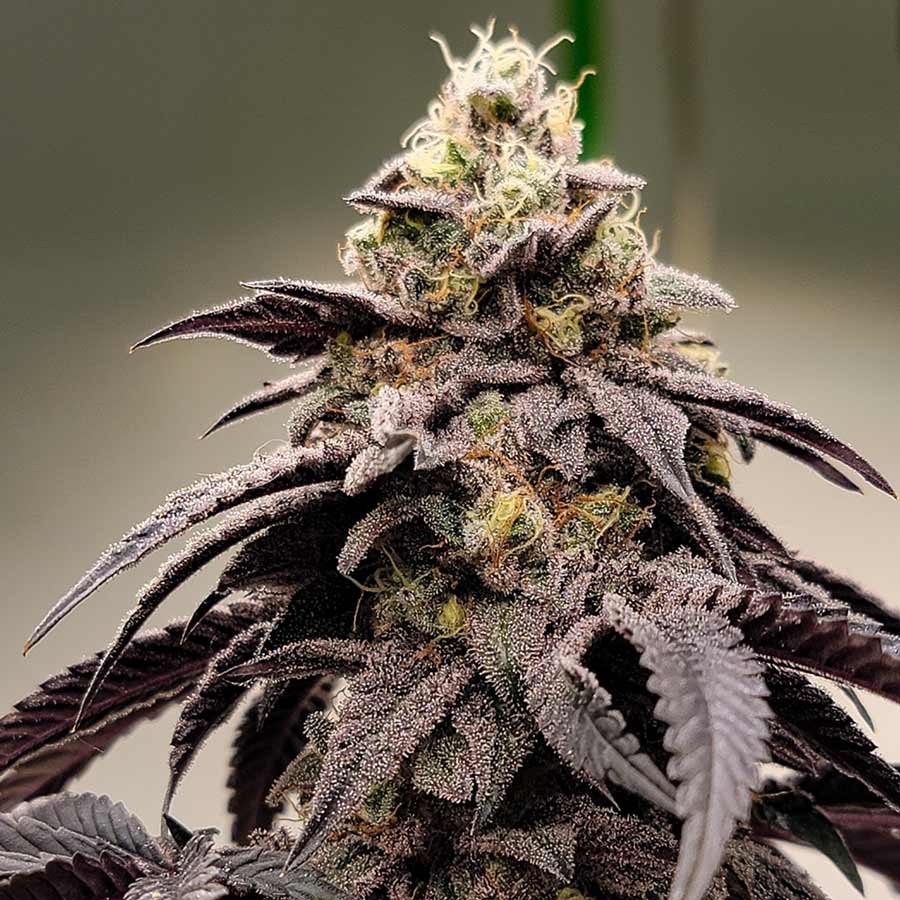Cannabis Anatomy: 15 Vital Points of a Marijuana Plant

Understanding cannabis anatomy helps growers and enthusiasts appreciate how each part of the plant contributes to its growth, reproduction, and potency. From roots to resin glands, every structure plays a vital role in the life cycle of the marijuana plant.
What Makes Up a Cannabis Plant
A cannabis plant is more than just leaves and buds—it’s a complex, living system made up of distinct parts, each with a specific role in its growth, reproduction, and chemical production. Understanding these components helps growers optimize cultivation and ensures better yields and quality.
Roots
The root system anchors the plant and absorbs water, nutrients, and oxygen from the soil. The main root or taproot grows downward, branching into finer roots that support the plant's structure and feed the plant. Healthy cannabis roots are crucial for strong growth and resistance to disease.
Root Crown
Located where the roots meet the main stem, the root crown acts as a transition point between the underground system and the above-ground structure. It's important to keep this area well-aerated and free from excessive moisture to prevent rot and infection.
Main Stem
The main stem (or stalk) provides the structural backbone of the plant. It supports vertical growth and transports water and nutrients through the plant's vascular system. A strong main stem is essential for holding up heavy buds and promoting more bud sites.
Nodes and Internodes
Nodes are the points on the stem where branches, leaves, or flowers grow. The spaces between nodes are called internodes. These help identify the plant’s sex during the pre-flower stage and determine the overall structure and size of the plant.
Fan Leaves
Large, iconic fan leaves are responsible for photosynthesis, using carbon dioxide, light, and water to create energy. While they contain little to no cannabinoids, they're essential for plant health and often used to diagnose deficiencies or stress.
Sugar Leaves
These smaller leaves grow out of developing cannabis buds and are usually heavily covered in tiny crystals known as trichomes. Though not as potent as the buds, sugar leaves still contain cannabinoids and are often used for extracts or edibles.
Cannabis Buds (Flowers)
The female cannabis flowers, or buds, are the most sought-after part of the plant. This is where the highest concentration of resin glands, aromatic oils, and cannabinoids like THC and CBD are found. Buds form at bud sites, typically on the top colas and side branches.
Colas
The main cola is the central flower cluster that forms at the top of the plant. Smaller colas appear along the branches. Proper training and light exposure can lead to more bud sites and bigger colas.
Trichomes
These tiny crystals cover the surface of buds and sugar leaves. Trichomes contain resin glands that produce cannabinoids, terpenes, and flavonoids—compounds responsible for the plant’s effects, aroma, and flavor.
Pistils and Stigmas

Found on female flowers, pistils contain the female reproductive organs, including stigmas, which are the hair-like structures that catch pollen from male plants. Pistil color helps indicate plant maturation during the flowering stage.
Calyx and Ovule
The calyx is the base of the flower that surrounds the female plant's ovule, protecting it and supporting seed production if pollinated. This structure is rich in resin and cannabinoids.
Pollen Sacs
Found only on male cannabis plants, pollen sacs form in clusters and open to release pollen. This pollen can fertilize female plants, triggering seed pod formation instead of cannabinoid-rich buds.
Cannabis Seeds
If fertilized, the female marijuana plant produces cannabis seeds within its calyx. These seeds carry the plant’s genetic material and can be used to grow weed of the same or hybrid strain. Unfertilized females (sinsemilla) produce more potent flowers.
Cannabis Leaves
Beyond fan and sugar leaves, cannabis leaves also include smaller bracts and sepals that protect flowers. They contribute to cannabis growth, structure, and appearance.
Apical Bud
Located at the top of the main stem, the apical bud is the primary growth point. Controlling this area (via topping or pruning) can help redistribute energy and encourage the formation of more bud sites across the entire plant.
How to Properly Take Care of a Marijuana Plant
Caring for a marijuana plant involves understanding each part of its anatomy and giving it what it needs at every stage of growth. Here's how to support healthy development from the roots to the buds.
- Roots – Keep soil well-aerated and avoid overwatering to prevent root rot and allow oxygen intake.
- Root crown – Ensure the area where the stem meets the soil stays dry and clean to avoid fungal growth.
- Main stem – Provide support as the plant grows tall; use ties or stakes to prevent bending or snapping.
- Fan leaves – Monitor for discoloration or curling as signs of nutrient imbalances or pests.
- Sugar leaves – Trim lightly if they crowd buds; avoid excessive handling to preserve trichomes.
- Nodes – Check nodes during the pre-flower stage to identify sex and remove unwanted male plants early.
- Apical bud – Topping this area encourages bushier growth and more bud sites across the plant.
- Colas – Expose colas to plenty of light and airflow to reduce mold and boost bud development.
- Trichomes – Handle buds gently to preserve these resin glands that carry potency and aroma.
- Pistils and stigmas – Watch for color changes to help time the harvest at peak potency.
- Calyx – Avoid stress during flowering to prevent stunted calyx growth and ensure healthy buds.
- Pollen sacs – Remove male plants quickly if you're growing for flower, to avoid accidental pollination.
- Cannabis seeds – If producing seeds, allow full pollination and maturation before harvesting.
- Cannabis leaves – Maintain proper humidity and airflow to prevent leaf diseases like powdery mildew.
- Entire plant – Rotate plants for even light exposure and regularly inspect for pests or signs of stress.
Final Thoughts

Knowing the vital parts of a marijuana plant isn't just about anatomy—it's about understanding how to nurture each stage of its life cycle for better growth, health, and potency. Keep learning, stay observant, and let the plant guide your growth too.
Looking to improve cultivation techniques or deepen plant knowledge? Examine related guides and growing tips to enhance every phase of the cannabis lifecycle—from seed to harvest.
Frequently Asked Questions
What’s the difference between indica and sativa cannabis plants?
Indica plants are short and bushy with relaxing effects, while sativa plants are tall and slender with more uplifting effects. They also differ in growth patterns and flowering time.
Can male and female cannabis plants grow together?
Yes, but only if you're aiming for seed production. Otherwise, separate them early to prevent pollination and preserve flower potency.
How do I identify cannabis pre-flowers?
Female pre-flowers have tiny hairs (stigmas); male ones look like small round sacs without hairs. They appear at the plant’s nodes during early growth.
What are sugar leaves used for after harvest?
Sugar leaves, coated in trichomes, are often used to make edibles, oils, or concentrates due to their cannabinoid content.
Why is airflow important for cannabis plant health?
Good airflow prevents mold, mildew, and pests, especially during flowering. It also supports stronger stems and healthier growth.



